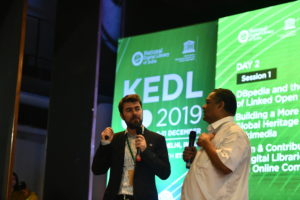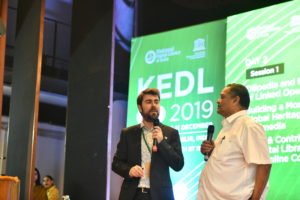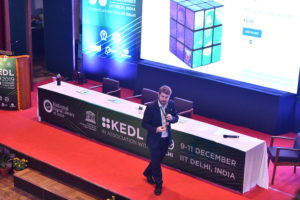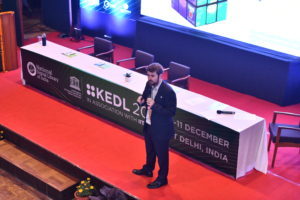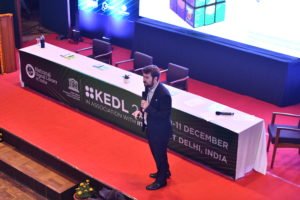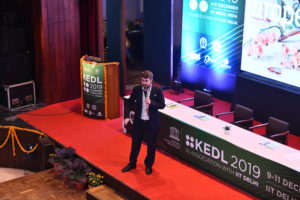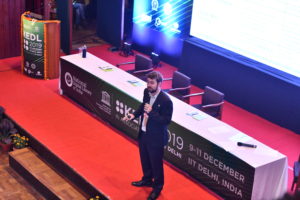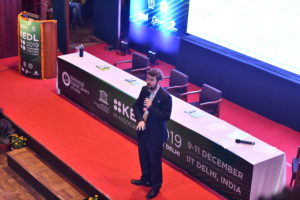9TH – 11TH DECEMBER 2019
SEMINAR HALL – IIT DELHI, INDIA
OPEN & CONTRIBUTION: TRENDS IN DIGITAL LIBRARIES’ ENGAGEMENT WITH ONLINE COMMUNITY
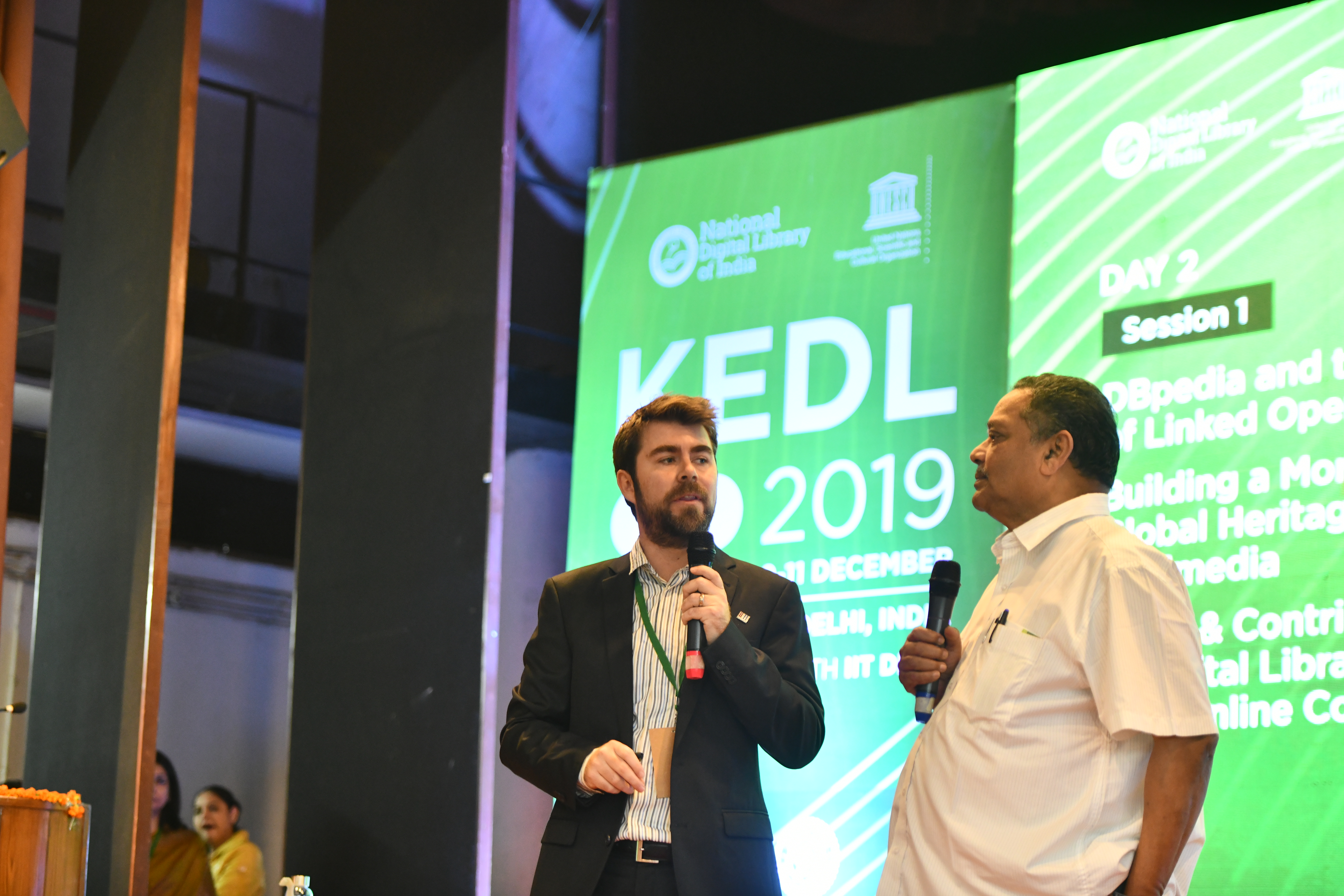
LIAM WYATT
Community Manager,
Europeana Foundation
10th Dec
3:20PM-4:00PM
Liam Wyatt is the Wikimedia Coordinator for Europeana and founder of the GLAM collaboration projects in the Wikimedia community. He was the world’s first ‘Wikipedian in Residence’ at the British Museum and the Global Cultural Partnerships coordinator for the Wikimedia Foundation. He has also worked with Creative Commons Australia and was the inaugural social media coordinator for the National Library of Australia.
He has the UNSW university medal in Historiography for his thesis “Wikipedia’s Academic Lineage” and a Masters of IP law from WIPO. He now lives in Bologna, Italy. He can be found online as @Wittylama.
ABSTRACT
The idea that a cultural heritage organization should be “open to”, and should encourage “contribution from”, the public is nothing new. Especially for publicly funded institutions, this would seem to be core to the mission – alongside research and preservation. However, since at least 2009 the terms “open” and “contribution” have taken new, more technical, and far more specific meanings. These definitional changes have been shaped just as much by the potential of new digital technologies (notably those of digitization, and of ubiquitous internet access) as by the changing, and far more demanding, societal expectations of the role of cultural heritage institutions – in what is termed a “participatory culture”. This presentation will examine how digital libraries in particular are responding to the changing expectations of the general public of what to be open and what it means to contribute.
Open
Where once a public cultural heritage institution could offer visiting hours to a reading-room or exhibition space (often further limited behind an entry fee or membership card) to be considered ‘open to the public’. In 1753 the British Museum (which at the time also served the role of what is now the British Library) was founded with the mission to be available to all ‘studious and curious persons’. Nonetheless, this openness was limited to those who could physically access the building, at certain times, and who were of a sufficient social rank that they would be allowed to enter.
Fast forward to today and it is now an assumed minimum standard that a public cultural institution’s collection records will be online and searchable. Of course the reality is far from achieving this – often for budgetary reasons, not from a lack of good intentions. Nonetheless, what the bar for what counts as “open” has become significantly higher than that. Now, open is most precisely defined as content which can be freely used, modified, and shared by anyone for any purpose. Open now no longer means mere access but also a sense of mutual ownership and redistribution under terms and in contexts outside the control of the institution itself. With very real impacts that are simultaneously technical, legal and financial, this meaning of “open” has led to an increasing gulf between institutions on either side of this ideological divide. However, this division does not correlate to any other existing division within the sector of cultural heritage institutions. There are collecting organisations of all ages, sizes, budgets, locations, and focus areas on either side. Thus, it is not merely a question of funding model, or government policies, or staff count that is decides whether an institution is “open” as evidenced by the widely cited openGLAM survey.
Libraries – especially those which digitally aggregate the physical collections of other institutions – are often active in promoting this openness through the use of technical-legal movements which have arisen: in particular the use of machine-readable rights labeling. While by no means the first ‘free licenses’, the suite of Creative Commons copyright licenses have proven incredibly popular and successful at helping to give agency to authors and creators to map-out the space of acceptable re-use between ‘all’ and ‘no’ rights reserved. Alongside the rise of standards which allow, indeed encourage, consistent discovery and reuse of CC content (such as search engines providing search-by-reuse rights filters), this suite has also given inspiration to other rights/access labelling schemas which are tailored for the cultural sector – notably the Rights Statement suite. These labels [not licenses], are an attempt to provide machine-and-human readable information in a consistent manner about rights and access conditions to digital content in a cultural heritage institution. As with the rise of CC, this was not a need that previously existed pre-mass digitisation and ubiquitous internet. They attempt to answer a question that had previously not been able to be asked.
As the principles and practices of consistent and public rights/access labelling are being adopted, some of the sins of the past are now being laid bare. Notably it highlights the inconsistent policies, or application of those policies, within and among equivalent cultural institutions. The emerging expectation of open access to data is shining and embarrassing light upon these inconsistencies. Now, taking this trend even further, we see the rising interest from various indigenous communities and cultural heritage organisations in providing machine-and-human readable traditional knowledge labelling schemas. As a new frontier in metadata standards, the technical, legal and cultural implications of this trend are not yet clear. Nonetheless, certain tensions are already present: between providing specificity but not fragmentation; between providing agency to traditional owners but not creating cultural monopolies; between recognising indigenous rights but not arbitrating competing claims on those rights.
Contribute
Stemming from the same cultural trend as this shift in the meaning of Open, is expansion in the nature of the word Contribution and the increasing expectation upon cultural institutions to provide methods for meaningful engagement with their collections. As “mere” access has become insufficient to be defined as open, the ability to view exhibition (temporary, or permanent) or to consult physical objects has become insufficient in terms of the expected ability to the public to exist in the aforementioned “participatory culture”. But, contrary to the instinctive reaction of some, the significance of, respect owed to, and (commercial or social) value of cultural collections and institutions is not diminished with greater interaction with those sites and communities. Quite the opposite. The value of heritage – its cultural capital – only increases with its wider, deeper integration and use within a society. Value is not a zero-sum-game between the control of an institution and engagement by the wider public. Wikipedia and its associated sister projects, including Wikidata – about whose processes much can be learned in the cultural sector – are at the vanguard of this culture but not the exclusive owners of it. In theory, this push to allow contribution (and its corollary derivative work re-use) is agreed with by most people in most circumstances, but it is instructive how various digital libraries have chosen to express their understanding of the concept. None is inherently better, but they do represent different depths of willingness to allow participation within the collection.Europeana and the Digital Public Library of America (DPLA) both have a “pro” face of their websites, which are geared specifically towards building a community of practice around the institutional networks, policies, events, grants, and software tools. These include various methods of participation and engagement, most distinctly Europeana’s elected body: the members’ council. These forms of contribution to the platform are structured around the formal, and they imply an understanding of participatory governance where the audience, contributor, and coordinator are an overlapping Venn-diagram of stakeholders.
At a different layer of the meaning of “contribution”, the DPLA, Digital New Zealand (DigitalNZ), Trove (the Australian digital library), and the National Digital Library of India (NDLI) all have a personal password-protected login features – but the services provided by each are quite different. NDLI’s login
service is geared towards providing a single access point to access full-text content from closed-access sources, much like a traditional library card. But is not contribution per se. Digital NZ, Trove and DPLA’s login service allow the user to save collection material to a personal bookmarks list for later reference, but Digital NZ makes the particular feature of “stories” – whereby content from within the platform can be curated by the user into easily built and shareable illustrated blogs.
The format indicates that the contribution is the intellectual value of the combining and contextualising content into sets with particular meaning for the end-user. However, this form of contribution obliges the user to stay within the walls of the content provided on the platform itself. By contrast, and uniquely among these digital library platforms, Europeana has no login feature at all. Yet, it does run content-contribution campaigns. Material from the public is digitised at “collection days” and then incorporated into the main platform.
Finally, and most extensively, Trove’s take on the concept of contribution encourages users to not only tag content for personal use, but also to provide corrected transcriptions for the digitised material itself. With a significant focus of the Trove collections on digitised newspapers supported by OCR text, the Australian Newspaper Digitisation Program (later to become bundled into Trove as a single platform) made the fundamental decision to allow the general public to alter the content of the transcriptions themselves. Not only did this lead to a large amount of poorly OCR’d content being improved (creating a virtuous cycle of discovery, use, backlinking, and more discovery) but created a vocally passionate community around that content. This proved important not only for the quality of the content but for the importance of the institution when faced with political and funding pressures. The presentation at KEDL 2019 elaborates on these trends of “open” and “contribution” with further examples, comparisons, and expectations about how they will continue to affect – for better or worse – the public’s expectations for engagement with the digital library sector.
PRESENTATION
Open & Contribution: Trends in Digital Libraries’ Engagement with Online Community



